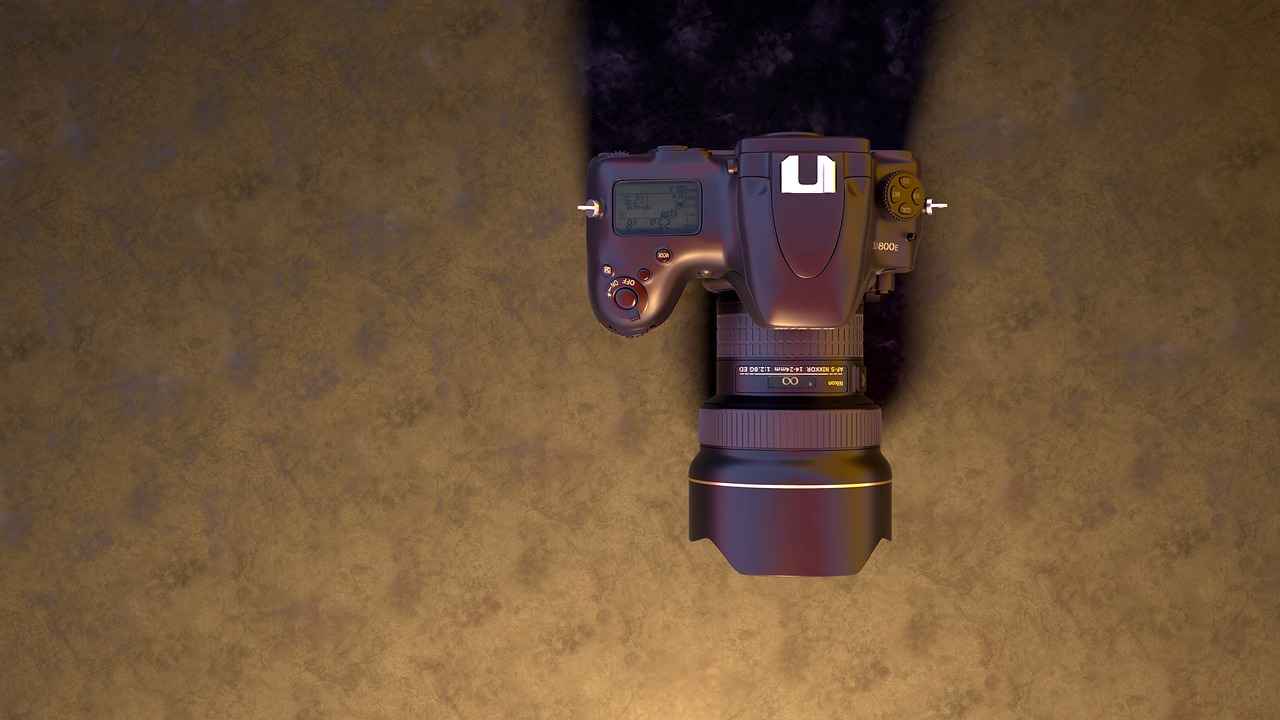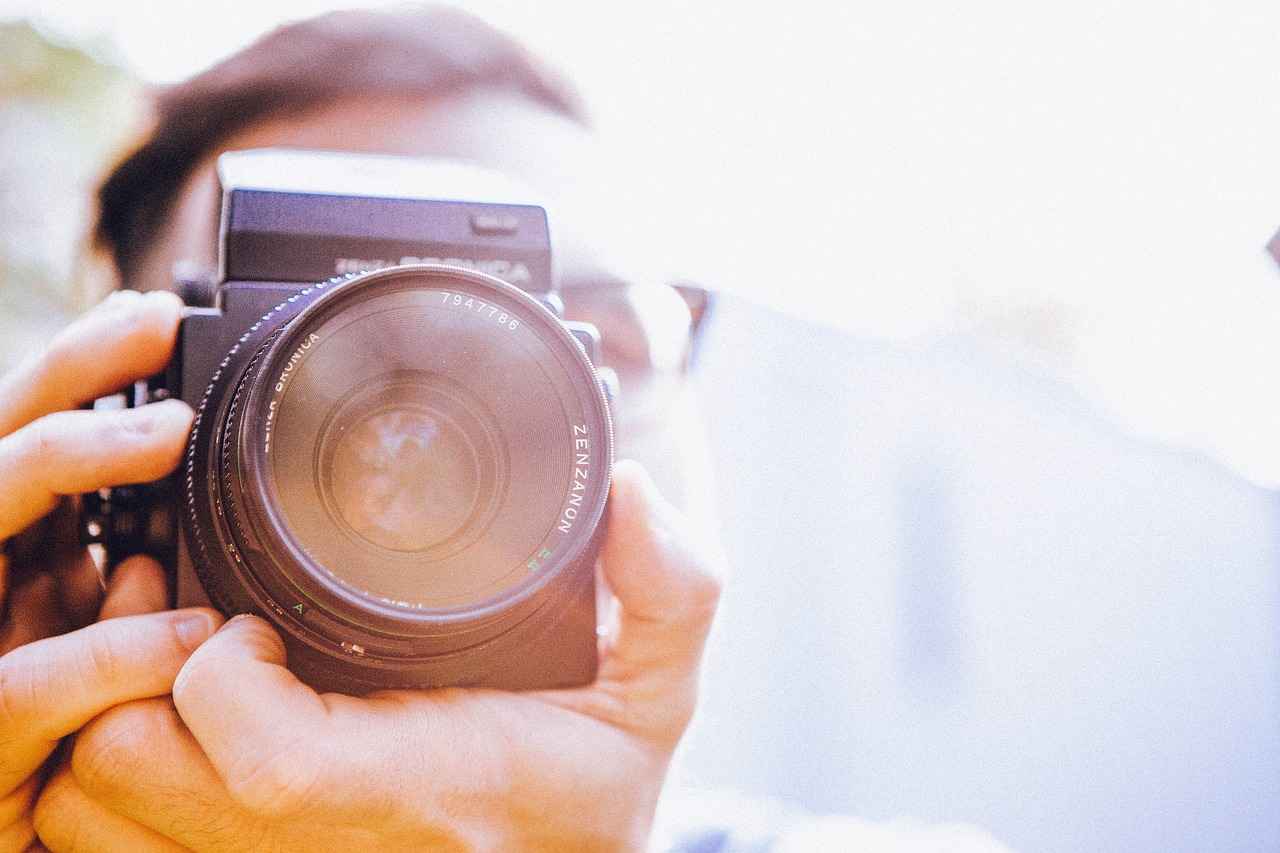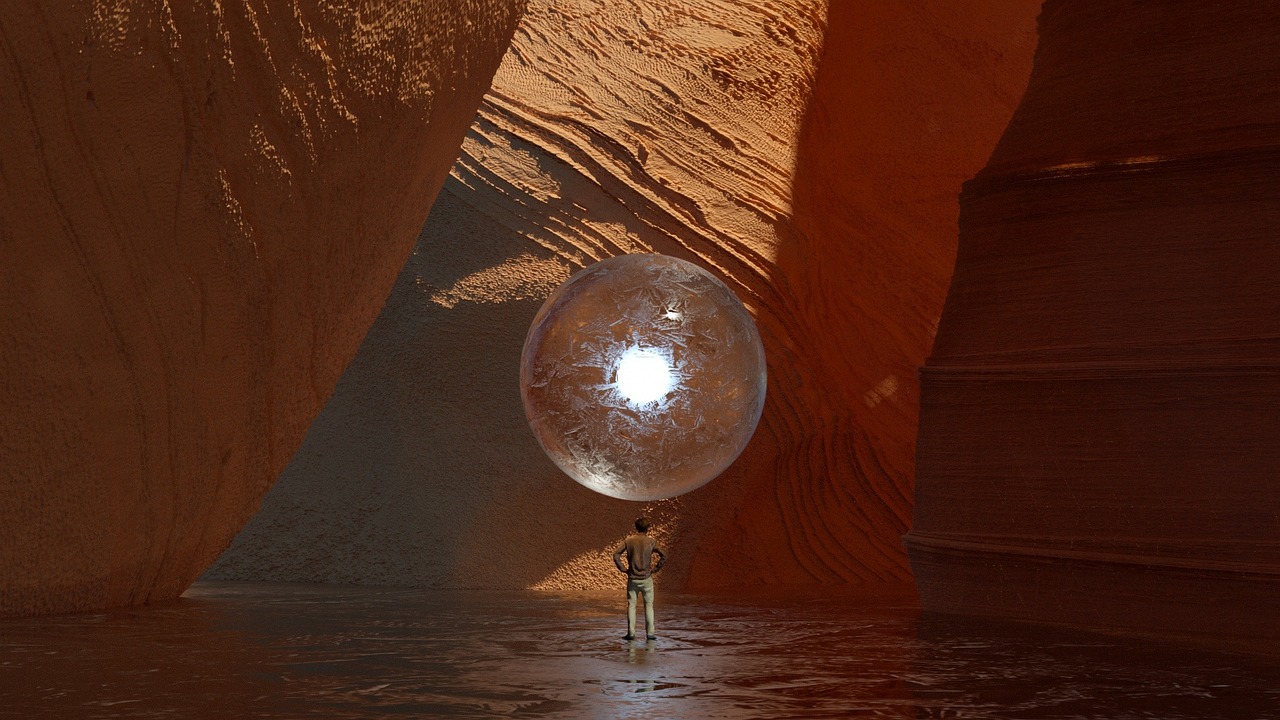This article delves into the transformative impact of 3D action cameras on sports filmmaking, emphasizing their numerous advantages, technological advancements, and the ways they enhance viewer engagement and storytelling.
What Are 3D Action Cameras?
3D action cameras are cutting-edge devices engineered to capture immersive footage from diverse angles. They offer a three-dimensional perspective that significantly enhances the viewing experience for both sports enthusiasts and filmmakers. By utilizing advanced optics and dual-lens technology, these cameras create a realistic representation of the action.
How Do 3D Action Cameras Work?
Understanding the technology behind 3D action cameras is crucial. These devices employ dual lenses to capture images from slightly different angles, simulating depth perception. This technology results in a lifelike viewing experience that draws viewers into the action, making them feel as if they are part of the event.
What Are the Benefits of Using 3D Action Cameras in Sports?
- Enhanced Immersion: The 3D effect allows viewers to experience sports events in a more engaging manner.
- Improved Storytelling: Filmmakers can convey narratives more effectively by using depth and perspective.
- Capturing Fast-Paced Action: These cameras excel at recording high-speed movements with outstanding clarity.
How 3D Action Cameras Enhance Viewer Engagement
The immersive quality of 3D action cameras captivates audiences, making them feel as though they are part of the action. This heightened engagement leads to increased viewership and fan loyalty, as viewers are more likely to connect emotionally with the content.
What Are the Key Features of Modern 3D Action Cameras?
Modern 3D action cameras come equipped with advanced features such as:
- High-Resolution Recording: Ensures stunning visuals that capture every detail.
- Stabilization Technology: Reduces shaky footage, providing smooth viewing experiences.
- Wireless Connectivity: Facilitates easy sharing and live streaming of content.
How to Choose the Right 3D Action Camera for Sports Filmmaking?
Selecting the appropriate 3D action camera involves considering factors such as:
- Resolution: Higher resolutions yield better image quality.
- Battery Life: Essential for extended filming sessions.
- Durability: Look for cameras that can withstand harsh conditions.
- User-Friendly Interfaces: Ensure ease of use, especially during fast-paced events.
What Are the Challenges of Using 3D Action Cameras?
Despite their numerous advantages, 3D action cameras present certain challenges:
- Specialized Editing Software: Requires knowledge of advanced editing techniques.
- Potential Motion Sickness: Some viewers may experience discomfort due to the immersive experience.
How Are 3D Action Cameras Changing Sports Broadcasting?
The integration of 3D action cameras in sports broadcasting is revolutionizing how audiences experience live events. They offer new angles and perspectives that traditional cameras cannot provide, allowing fans to see the action from unique viewpoints.
What Role Do 3D Action Cameras Play in Athlete Training?
Athletes are increasingly utilizing 3D action cameras for training purposes. These devices enable them to analyze their performance in three dimensions, allowing for precise adjustments and improvements in their skills.
How Are Filmmakers Adapting to 3D Action Cameras?
Filmmakers are embracing 3D action cameras by developing innovative techniques and storytelling methods that leverage the unique capabilities of these devices. This adaptation is leading to groundbreaking sports documentaries and films that captivate audiences.
What Are the Future Trends for 3D Action Cameras in Sports Filmmaking?
As technology continues to evolve, future trends for 3D action cameras in sports filmmaking may include:
- Enhanced AI Integration: For smarter editing and content creation.
- Improved Battery Life: Ensuring longer filming durations.
- More Compact Designs: Increasing portability without sacrificing quality.
How Can You Get Started with 3D Action Cameras?
Getting started with 3D action cameras involves researching available models, understanding their features, and experimenting with various filming techniques. This exploration can lead to capturing stunning sports footage that stands out in today’s competitive landscape.

What Are 3D Action Cameras?
3D action cameras represent a significant advancement in the realm of video technology, specifically tailored to capture dynamic and immersive footage. These devices are engineered to provide a three-dimensional perspective that enhances the viewing experience for both sports enthusiasts and filmmakers. Unlike traditional cameras, which capture flat images, 3D action cameras utilize innovative technology to offer a depth that makes the viewer feel as though they are part of the action.
At the core of 3D action cameras are their dual-lens systems. These lenses work in tandem to capture images from slightly different angles, mimicking the way human eyes perceive depth. This process is known as stereoscopic imaging. By combining the two images, the camera creates a single three-dimensional video that can be viewed on compatible devices, providing an experience that is both captivating and realistic.
One of the primary advantages of using 3D action cameras in sports filmmaking is the enhanced immersion they offer. Viewers are not just passive observers; they feel as though they are part of the event, which can significantly boost engagement. This is particularly beneficial in sports where the action is fast-paced and requires a level of detail that traditional cameras may struggle to provide.
- High-Resolution Recording: Most modern 3D action cameras support high-definition recording, ensuring that every detail is captured with clarity.
- Stabilization Technology: To combat the vibrations and movements common in sports, many cameras include advanced stabilization features.
- Wireless Connectivity: This allows for easy sharing and streaming of footage, making it convenient for filmmakers to distribute their content.
The immersive quality of 3D action cameras significantly enhances viewer engagement. Audiences are drawn into the action, experiencing it as if they were actually present at the event. This heightened level of interaction can lead to increased viewership and a stronger connection to the sport, fostering greater fan loyalty.
Despite their numerous advantages, 3D action cameras come with challenges. The need for specialized editing software can complicate the post-production process. Additionally, some viewers may experience motion sickness due to the immersive nature of the footage, which can limit its audience.
The integration of 3D action cameras in sports broadcasting is revolutionizing the viewer experience. These cameras provide unique angles and perspectives that traditional cameras cannot, allowing broadcasters to present the game in a more engaging and visually appealing manner.
As technology continues to advance, the future of 3D action cameras looks promising. Innovations such as improved battery life, enhanced artificial intelligence integration, and more compact designs are on the horizon. These developments will likely make 3D action cameras more accessible and easier to use, further solidifying their place in sports filmmaking.
In conclusion, 3D action cameras are not just a passing trend; they are a transformative tool for sports filmmakers. By providing a unique perspective and enhancing viewer engagement, these cameras are set to redefine how we experience sports.

How Do 3D Action Cameras Work?
Understanding the technology behind 3D action cameras is crucial for anyone interested in capturing immersive sports footage. These innovative devices utilize dual lenses to capture images from slightly different angles, which simulates depth perception. This technique creates a lifelike viewing experience that is not only engaging but also enhances the storytelling aspect of sports filmmaking.
At the core of 3D action cameras is the principle of stereoscopic imaging. By recording two slightly offset images simultaneously, these cameras mimic the way human eyes perceive depth. The left lens captures an image from one angle, while the right lens captures the same scene from a different angle. When these images are combined during playback, they create a three-dimensional effect that makes viewers feel as though they are part of the action.
To truly appreciate how 3D action cameras work, it is essential to understand their key components:
- Dual Lenses: As mentioned, these cameras feature two lenses that capture images from different perspectives.
- Image Processing: Advanced algorithms process the captured images, ensuring that they align correctly and enhance the depth effect.
- Display Technology: Some 3D cameras come with built-in displays that allow users to preview their footage in real-time.
- Stabilization Features: Many modern 3D action cameras include stabilization technology to reduce motion blur and ensure smooth footage, even during high-intensity activities.
In addition to these components, 3D action cameras often come equipped with various features that enhance their usability:
- High Resolution: Many models offer 4K recording capabilities, providing stunning clarity and detail.
- Wireless Connectivity: Features such as Wi-Fi and Bluetooth enable quick sharing of footage and remote control of the camera.
- Durability: Designed for action, these cameras are often waterproof and shock-resistant, making them ideal for extreme sports.
Moreover, the editing process for 3D footage requires specialized software that can handle stereoscopic video. This software allows filmmakers to adjust the depth perception and ensure that the final product is visually appealing. Understanding the nuances of editing 3D footage is essential for achieving the desired effect and engaging the audience effectively.
In conclusion, the technology behind 3D action cameras is a remarkable blend of optical engineering and digital innovation. By utilizing dual lenses and advanced processing techniques, these cameras create an immersive experience that enhances sports filmmaking. As technology continues to evolve, we can expect even more advancements that will further refine the capabilities of these exciting devices.

What Are the Benefits of Using 3D Action Cameras in Sports?
In the realm of sports filmmaking, 3D action cameras have emerged as a game-changer, offering a multitude of benefits that enhance both the filming process and the viewer’s experience. These innovative devices are designed to capture dynamic and immersive footage, making them invaluable for sports enthusiasts and filmmakers alike.
- Enhanced Immersion: One of the most significant advantages of 3D action cameras is their ability to create an immersive experience. By capturing footage in three dimensions, these cameras allow viewers to feel as if they are part of the action. This heightened sense of presence can be particularly impactful in sports, where the energy and excitement of the moment can be effectively conveyed.
- Improved Storytelling Capabilities: 3D action cameras enable filmmakers to tell more compelling stories. With the ability to capture various angles and perspectives, filmmakers can present a more nuanced narrative that highlights the intricacies of the sport. This depth of storytelling can engage audiences on a deeper emotional level, making the viewing experience more memorable.
- Unparalleled Clarity and Detail: The advanced technology in 3D action cameras allows for high-resolution recording, ensuring that every detail is captured with precision. This clarity is essential in fast-paced sports, where split-second actions can be the difference between success and failure. Viewers can appreciate the skill and athleticism of the athletes as they witness the action unfold in stunning detail.
- Versatility in Filming: 3D action cameras are incredibly versatile, capable of being mounted on various equipment, including helmets, bikes, and drones. This adaptability allows filmmakers to capture unique angles that traditional cameras may not achieve. Whether it’s a close-up of a skateboard trick or an aerial view of a marathon, the possibilities are endless.
- Engagement and Fan Loyalty: The immersive quality of 3D footage captivates audiences, fostering a stronger connection between fans and the sport. As viewers feel more engaged with the content, they are likely to develop greater loyalty to teams and events, ultimately enhancing their overall experience.
- Training and Performance Analysis: Beyond filmmaking, 3D action cameras play a crucial role in athlete training. By providing athletes with the ability to review their performance in three dimensions, they can identify areas for improvement and refine their techniques. This analytical approach can lead to enhanced performance and better results in competitions.
In summary, the integration of 3D action cameras into sports filmmaking not only enhances the visual quality of the content but also revolutionizes how stories are told and experienced by audiences. With their ability to create immersive, detailed, and engaging footage, these cameras are set to redefine the landscape of sports media.

How 3D Action Cameras Enhance Viewer Engagement
The world of sports filmmaking is experiencing a significant transformation, thanks to the advent of 3D action cameras. These innovative devices are not only changing how events are captured but also how viewers experience them. In particular, the immersive quality of 3D action cameras captivates audiences, making them feel as though they are part of the action. This heightened engagement can lead to increased viewership and fan loyalty, ultimately reshaping the landscape of sports media.
3D action cameras are equipped with dual lenses that capture footage from slightly different angles. This technology simulates depth perception, allowing viewers to experience a more lifelike representation of the action. The result is a viewing experience that transcends traditional 2D footage, creating a sense of being right in the middle of the excitement.
The immersive experience provided by 3D action cameras is primarily due to their ability to capture fast-paced movements with exceptional clarity. When viewers watch a game or event, they can see the intricate details of the athletes’ movements and the surrounding environment. This level of detail fosters a deeper emotional connection to the sport, enhancing viewer engagement.
- Increased Emotional Response: Viewers often experience heightened emotions, such as excitement and adrenaline, when they feel they are part of the action.
- Enhanced Memory Retention: Immersive experiences are more memorable, helping fans recall key moments and share them with others.
- Stronger Community Bonds: Feeling connected to the action can strengthen the sense of community among fans, leading to increased loyalty.
In the realm of sports broadcasting, 3D action cameras are redefining viewer experiences. Traditional broadcasts often rely on static camera angles, which can limit the excitement of the game. In contrast, 3D cameras offer dynamic perspectives that can follow the action closely, providing viewers with a more comprehensive understanding of the game as it unfolds.
When audiences feel more engaged, the benefits extend beyond mere enjoyment. Sports organizations can see:
- Increased Viewership: Engaging content attracts more viewers, leading to higher ratings.
- Greater Sponsorship Opportunities: Brands are more likely to invest in sports that demonstrate high engagement levels.
- Enhanced Fan Loyalty: A loyal fan base is crucial for the long-term success of any sport, and immersive experiences foster this loyalty.
Despite their numerous advantages, 3D action cameras come with challenges. For instance, the technology requires specialized editing software, which can be a barrier for some filmmakers. Additionally, some viewers may experience motion sickness due to the immersive nature of the footage. Addressing these challenges is vital for the continued adoption of 3D technology in sports filmmaking.
Filmmakers are beginning to adapt their techniques to fully utilize the capabilities of 3D action cameras. This includes experimenting with new storytelling methods that harness the immersive qualities of the footage. By doing so, they can create compelling narratives that resonate with audiences on a deeper level.
In summary, the integration of 3D action cameras into sports filmmaking is revolutionizing how audiences engage with their favorite sports. As technology continues to advance, the potential for even more immersive experiences is limitless. By understanding and embracing these changes, filmmakers and broadcasters can enhance viewer engagement and foster a stronger connection between fans and the sports they love.

What Are the Key Features of Modern 3D Action Cameras?
Modern 3D action cameras represent a significant leap in technology, designed to cater to the growing demands of sports filmmakers and enthusiasts alike. These cameras are not just about capturing high-quality footage; they redefine the way we perceive movement and action in sports. Below, we delve into the key features that make these devices essential for contemporary sports filmmaking.
- High-Resolution Recording: One of the standout features of modern 3D action cameras is their ability to record in high resolutions, often reaching up to 4K and beyond. This level of clarity allows filmmakers to capture every detail, from the sweat on an athlete’s brow to the intricate movements of their techniques.
- Stabilization Technology: Advanced stabilization technology, such as electronic image stabilization (EIS), ensures that footage remains smooth and steady, even during the most intense action. This feature is crucial for sports where movement is rapid and unpredictable, allowing viewers to focus on the action without being distracted by shaky footage.
- Wireless Connectivity: Modern 3D action cameras come equipped with wireless capabilities, enabling users to connect to smartphones, tablets, or computers for easy sharing and editing. This feature enhances the workflow for filmmakers, allowing for quick uploads to social media or live streaming of events.
- Dual-Lens Systems: The hallmark of 3D action cameras is their dual-lens setup, which captures footage from two slightly different angles. This technology simulates depth perception, providing a more immersive viewing experience that traditional cameras cannot match.
- Durability and Waterproofing: Built to withstand harsh conditions, many modern 3D action cameras are rugged and waterproof. This durability ensures that they can be used in various environments, from snowy mountains to underwater adventures, making them ideal for extreme sports.
- User-Friendly Interfaces: With intuitive controls and user-friendly interfaces, modern 3D action cameras are accessible to both amateurs and professionals. Features such as touchscreen displays and voice commands simplify the filming process, allowing users to focus on capturing the perfect shot.
- Editing Software Compatibility: Many 3D action cameras come with bundled editing software or are compatible with popular editing programs. This integration allows filmmakers to easily edit their footage, add effects, and create compelling narratives that resonate with audiences.
The combination of these features not only enhances the quality of sports filmmaking but also enables creators to tell more engaging stories. The ability to capture immersive 3D footage allows filmmakers to transport viewers right into the heart of the action, making them feel as if they are part of the experience.
As we continue to explore the potential of 3D action cameras, it becomes evident that their impact on sports filmmaking is profound. They not only change the way we capture sports but also how we experience them. With advancements in technology, we can only anticipate even more exciting features in the future, making these cameras a staple in the filmmaking toolkit.

How to Choose the Right 3D Action Camera for Sports Filmmaking?
Choosing the right 3D action camera for sports filmmaking is crucial for capturing breathtaking moments with clarity and depth. With the surge in popularity of 3D technology, filmmakers must navigate through various options to find a camera that meets their specific needs. Here are some essential factors to consider when making your selection.
Resolution is a pivotal aspect when selecting a 3D action camera. A higher resolution, such as 4K or even 6K, ensures that your footage is crisp and detailed, making it ideal for large screens and immersive viewing experiences. Filmmakers should prioritize cameras that offer adjustable resolution settings, allowing flexibility based on the project requirements.
Battery life can significantly impact your filming experience, especially during long sports events. Look for cameras that offer a minimum of two hours of continuous recording time. Additionally, consider models that support external battery packs or quick charging options to avoid interruptions during critical moments.
Sports filmmaking often involves extreme conditions, so durability is essential. Opt for cameras that are waterproof, shockproof, and dirt-resistant. This ensures that your equipment can withstand the rigors of outdoor sports, providing peace of mind while you focus on capturing the action.
A user-friendly interface can make a significant difference, especially when you’re in the midst of a shoot. Look for cameras that feature intuitive controls, touchscreen displays, and easy navigation to allow for quick adjustments on the fly. A well-designed interface helps you concentrate on the action rather than fumbling with settings.
- Stabilization Technology: Look for cameras with advanced stabilization features to minimize shaky footage.
- Wireless Connectivity: Cameras that offer Wi-Fi or Bluetooth connectivity allow for easy sharing and remote control.
- Editing Software Compatibility: Ensure that the camera is compatible with popular editing software to streamline your post-production process.
While it can be tempting to go for the cheapest option, investing in a quality 3D action camera can enhance your filmmaking significantly. Set a budget but be willing to stretch it for a camera that meets your essential requirements. A well-rounded camera often yields a better return on investment through improved quality and usability.
Before making a purchase, it’s wise to consult reliable reviews and comparisons from trusted sources. Websites dedicated to technology reviews often provide in-depth analyses, user feedback, and side-by-side comparisons of different models, helping you make an informed decision.
In summary, selecting the right 3D action camera involves careful consideration of resolution, battery life, durability, user interface, and additional features. By evaluating these factors, you can ensure that your camera choice aligns with your filmmaking goals, ultimately enhancing your sports storytelling.

What Are the Challenges of Using 3D Action Cameras?
As the popularity of 3D action cameras continues to rise in sports filmmaking, it is essential to consider the challenges that accompany their use. While these innovative devices offer remarkable advantages, they also present several hurdles that filmmakers and content creators must navigate to fully leverage their potential.
Despite the numerous benefits of 3D action cameras, there are notable challenges that users should be aware of:
- Specialized Editing Software: One of the primary challenges associated with 3D action cameras is the need for specialized editing software. Unlike traditional cameras, the footage captured by 3D cameras requires specific tools to edit and render effectively. This can lead to additional costs and a steeper learning curve for filmmakers.
- Viewer Motion Sickness: The immersive experience offered by 3D action cameras can sometimes result in motion sickness for viewers. This issue arises due to the depth perception created by the technology, which may not be suitable for all audiences. Filmmakers must consider this when creating content, potentially limiting the audience’s enjoyment.
- Increased Production Complexity: The use of 3D cameras adds layers of complexity to the production process. Filmmakers must account for synchronization between dual lenses, lighting conditions, and camera positioning to achieve the desired effect. This complexity can lead to longer production times and increased costs.
- Limited Battery Life: Many 3D action cameras have a shorter battery life compared to their 2D counterparts. This limitation can hinder the ability to capture extended events or action sequences, requiring filmmakers to plan their shoots carefully and consider backup power solutions.
- Higher Equipment Costs: Investing in 3D action cameras often entails a higher initial cost than traditional cameras. This financial barrier can be a concern for independent filmmakers or smaller production companies looking to incorporate this technology into their projects.
Despite these challenges, the potential of 3D action cameras to transform sports filmmaking is undeniable. Filmmakers who are willing to invest the time and resources to overcome these hurdles can create captivating and immersive experiences that resonate with audiences.
In conclusion, while 3D action cameras present certain challenges, addressing these issues can lead to innovative storytelling and enhanced viewer engagement. As technology advances and editing tools become more accessible, the barriers to using 3D action cameras may lessen, paving the way for a new era in sports filmmaking.

How Are 3D Action Cameras Changing Sports Broadcasting?
The world of sports broadcasting is undergoing a significant transformation, largely due to the incorporation of 3D action cameras. These innovative devices are not just enhancing the way events are filmed; they are fundamentally changing how audiences experience live sports. By providing new angles and perspectives that traditional cameras cannot offer, 3D action cameras are redefining the viewer’s engagement with athletic performances.
Unlike standard cameras, 3D action cameras are equipped with dual lenses that capture footage from slightly different angles. This technology simulates depth perception, creating a three-dimensional viewing experience that immerses viewers in the action. As a result, fans can feel as if they are part of the event, enhancing the excitement and emotional connection to the sport.
- Dynamic Angles: 3D action cameras can be placed in various locations, from the sidelines to the sky, providing unique perspectives that traditional cameras miss.
- Enhanced Storytelling: By capturing the intensity of the moment in three dimensions, broadcasters can tell a more compelling story, showcasing not just the game but the athletes’ emotions and efforts.
- Viewer Engagement: The immersive quality of 3D footage captivates audiences, making them feel as though they are experiencing the event firsthand, which can increase viewership and fan loyalty.
Despite their advantages, the use of 3D action cameras in sports broadcasting is not without challenges. For instance, the need for specialized editing software to process 3D footage can complicate production workflows. Additionally, some viewers may experience motion sickness due to the immersive nature of 3D content. Broadcasters must also consider the cost of these advanced technologies and how they fit into their overall production budgets.
To effectively integrate 3D action cameras into their broadcasts, sports networks are investing in training for their production teams. This includes learning how to operate the cameras, as well as understanding the nuances of editing 3D footage. Furthermore, many broadcasters are experimenting with interactive viewing experiences, allowing fans to choose their camera angles and perspectives during live events, further enhancing engagement.
As technology continues to evolve, the future of 3D action cameras in sports broadcasting looks promising. Innovations such as improved battery life, higher resolution capabilities, and enhanced stabilization features are on the horizon. Additionally, advancements in artificial intelligence may lead to more sophisticated editing tools, making it easier for broadcasters to create compelling narratives from 3D footage.
In conclusion, the integration of 3D action cameras is revolutionizing sports broadcasting by providing unparalleled angles and perspectives that enhance viewer engagement. As broadcasters continue to adapt to this technology, fans can look forward to a more immersive and exciting viewing experience.

What Role Do 3D Action Cameras Play in Athlete Training?
In the world of sports, the pursuit of excellence is a never-ending journey. Athletes are constantly seeking ways to improve their performance, and one of the most innovative tools they are now turning to is 3D action cameras. These devices are not just for capturing thrilling moments; they are revolutionizing how athletes train and analyze their skills.
3D action cameras provide a unique perspective that traditional cameras cannot offer. By capturing footage in three dimensions, these cameras allow athletes to see their movements from multiple angles. This capability is crucial for understanding body mechanics and making necessary adjustments. For instance, a swimmer can analyze their stroke technique in detail, identifying areas for improvement that might be missed with standard video.
- Dual Lens Technology: This feature captures images from slightly different angles, creating a lifelike representation of the athlete’s performance.
- High-Resolution Recording: Modern 3D action cameras offer high-definition video quality, ensuring that every detail is captured clearly.
- Stabilization Features: These cameras often include advanced stabilization technology, which is essential for capturing smooth footage during fast-paced activities.
- Data Overlay Capabilities: Some models allow athletes to overlay performance metrics, such as speed and heart rate, directly onto the video.
By reviewing footage captured with 3D action cameras, athletes can conduct a thorough analysis of their techniques. For example, a cyclist can assess their posture and aerodynamics, while a gymnast can evaluate their form during routines. This visual feedback is invaluable, as it enables athletes to make real-time adjustments and refine their skills. Coaches can also use this footage to provide targeted feedback, enhancing the overall training process.
The advantages of integrating 3D action cameras into training regimens are numerous:
- Enhanced Learning: Athletes can learn more effectively by viewing their performance from different angles, leading to quicker skill acquisition.
- Motivation Boost: Seeing tangible progress through recorded footage can motivate athletes to push their limits.
- Injury Prevention: By analyzing their movements, athletes can identify and correct potentially harmful techniques before they lead to injuries.
Despite their many benefits, using 3D action cameras also presents some challenges. Athletes may need to invest time in learning how to operate the equipment effectively and understand the editing process. Furthermore, the need for specialized software to analyze the footage can be a barrier for some users. Additionally, the immersive experience of 3D footage can sometimes lead to discomfort for viewers, which may affect how the footage is used in training sessions.
For athletes interested in incorporating 3D action cameras into their training, the first step is to research available models that suit their specific needs. Factors to consider include resolution, battery life, and durability. Once a camera is selected, athletes should familiarize themselves with its features and experiment with different filming techniques to capture the best footage possible.

How Are Filmmakers Adapting to 3D Action Cameras?
As the world of sports filmmaking continues to evolve, filmmakers are increasingly adapting to the unique capabilities of 3D action cameras. These devices not only capture stunning visuals but also open up new avenues for storytelling and creativity. By embracing these technologies, filmmakers are able to create immersive experiences that engage audiences in ways previously thought impossible.
With the introduction of 3D action cameras, filmmakers are reimagining how they tell stories. Traditional filmmaking often relies on a flat, two-dimensional perspective. However, 3D action cameras allow for a more dynamic narrative. By capturing footage from multiple angles, filmmakers can present events in a way that feels more immediate and personal. This is particularly effective in sports documentaries, where the thrill of the game can be conveyed through immersive visuals.
One of the most significant advantages of 3D action cameras is their ability to create an immersive viewing experience. Audiences can feel as if they are part of the action, whether it’s a high-speed chase on a skateboard or the intense atmosphere of a live football match. This emotional engagement is crucial for filmmakers aiming to connect with their viewers on a deeper level.
Modern 3D action cameras come equipped with advanced features such as high-resolution recording and stabilization technology. Filmmakers are leveraging these capabilities to produce high-quality content that stands out in a crowded market. The ability to shoot in various environments, from rugged mountain terrains to bustling urban landscapes, allows for a wide range of creative possibilities.
Filmmakers are not working in isolation; they are collaborating closely with athletes to understand their perspectives and experiences. This partnership enriches the storytelling process, allowing filmmakers to capture authentic moments that resonate with viewers. By integrating athletes’ insights, filmmakers can depict the grit and determination that defines sports.
While the opportunities presented by 3D action cameras are vast, filmmakers face challenges as well. The learning curve associated with new technology can be steep, requiring time and effort to master editing software and filming techniques. Additionally, some viewers may experience discomfort with the immersive nature of 3D footage, leading filmmakers to carefully consider their audience’s experience.
As technology continues to advance, the future of sports filmmaking with 3D action cameras looks promising. We can expect to see enhanced integration of artificial intelligence and machine learning, which will streamline the editing process and improve the overall quality of the content produced. Furthermore, as cameras become more compact and user-friendly, more filmmakers will have access to these transformative tools.
For those looking to dive into the world of 3D sports filmmaking, starting with the right equipment is essential. Researching various models and understanding their features will enable filmmakers to select a camera that best suits their needs. Experimentation with different filming techniques will also help in capturing stunning visuals that can elevate any sports documentary.
In summary, the adaptation of 3D action cameras by filmmakers is reshaping the landscape of sports filmmaking. Through innovative storytelling, immersive experiences, and collaboration with athletes, filmmakers are crafting narratives that resonate deeply with audiences. As technology continues to evolve, the potential for creative expression in this field is boundless.

What Are the Future Trends for 3D Action Cameras in Sports Filmmaking?
As the landscape of technology transforms at a rapid pace, 3D action cameras are poised to revolutionize the realm of sports filmmaking. The future trends for these innovative devices promise to enhance the way we capture and experience sports, making it more immersive and engaging than ever before.
One of the most exciting future trends for 3D action cameras is the integration of artificial intelligence (AI). AI can analyze footage in real-time, automatically adjusting settings such as exposure and stabilization to ensure optimal image quality. This technology could also facilitate smart editing, where the camera identifies the most thrilling moments during a game and compiles them into a highlight reel, significantly reducing post-production time.
Another critical advancement is the development of longer-lasting batteries. Filmmakers often face the challenge of limited shooting time during live events. Future 3D action cameras are expected to incorporate more efficient battery technologies, enabling longer recording times without compromising performance. This improvement will allow filmmakers to capture extended sequences without the constant worry of battery depletion.
Portability is essential for sports filmmakers who need to move quickly and capture action from various angles. Future trends suggest that 3D action cameras will become even more compact and lightweight, making them easier to transport and mount in diverse environments. This shift will enable filmmakers to capture spontaneous moments without the burden of heavy equipment.
As action sports often involve rapid movements and unpredictable conditions, the need for advanced stabilization technology is paramount. Future 3D action cameras will likely feature improved stabilization algorithms, allowing for smoother footage even in the most chaotic scenarios. This enhancement will significantly elevate the quality of sports films, providing audiences with a more enjoyable viewing experience.
In today’s interconnected world, seamless sharing capabilities are vital. Future models of 3D action cameras are expected to include enhanced wifi and Bluetooth connectivity, allowing filmmakers to upload and share their footage instantly. This feature will facilitate real-time sharing on social media platforms, increasing engagement and audience interaction.
With the rise of virtual reality (VR) and augmented reality (AR), future 3D action cameras may also cater to these technologies, offering filmmakers the ability to create immersive experiences for viewers. By integrating VR capabilities, audiences could experience sports events as if they were present, enhancing fan engagement and providing a new dimension to storytelling.
The combination of 3D action cameras with drone technology is another trend on the horizon. Drones equipped with 3D cameras can capture aerial shots that add a unique perspective to sports filmmaking. This synergy will allow filmmakers to explore new angles and dimensions, creating visually stunning narratives.
As technology advances, the focus will increasingly shift toward enhancing the user experience. Future 3D action cameras will likely feature intuitive interfaces, making them easier for both amateurs and professionals to operate. This user-friendly approach will encourage more filmmakers to experiment with 3D technology, expanding the creative possibilities within sports filmmaking.
In summary, the future of 3D action cameras in sports filmmaking is bright, with advancements in AI, battery technology, and portability leading the way. These innovations promise to redefine how filmmakers capture and present sports, creating more engaging and immersive experiences for audiences worldwide.

How Can You Get Started with 3D Action Cameras?
Getting started with 3D action cameras can be an exciting journey for both amateur and professional filmmakers. These innovative devices are designed to capture immersive footage, enhancing the viewing experience significantly. To ensure you make the most out of your 3D action camera, it’s essential to follow a structured approach that involves research, understanding features, and practicing filming techniques.
The first step in your journey is to research available models. With numerous brands and specifications on the market, it can be overwhelming. Focus on well-reviewed brands that offer robust performance in various conditions. Read user reviews and watch comparison videos to get a sense of what each model can offer. Key features to consider include:
- Resolution: Look for cameras that offer at least 4K resolution for high-quality footage.
- Battery Life: Ensure that the camera can last through your filming sessions.
- Durability: Choose models that are waterproof or shockproof, especially for sports activities.
Once you’ve narrowed down your options, take the time to understand the features of your chosen model. Familiarize yourself with settings such as frame rates, stabilization technology, and lens options. Many modern 3D action cameras come with built-in stabilization, which is crucial for capturing smooth footage during high-energy sports events. Additionally, explore the connectivity options, such as Wi-Fi and Bluetooth, which can enhance your filming experience by allowing for easy sharing and remote control.
After selecting your camera, it’s time to experiment with filming techniques. Start by practicing in different environments and lighting conditions to see how your camera performs. Consider using various angles and perspectives to capture unique shots that stand out. For instance, mounting the camera on a helmet or using a handheld gimbal can provide dynamic footage that enhances storytelling.
In addition to filming, learning basic editing skills is essential for producing polished videos. Familiarize yourself with editing software that supports 3D footage. Many programs offer tutorials that can help you get started. Focus on techniques such as color correction, cutting unnecessary footage, and adding transitions to create a seamless viewing experience.
Engaging with online communities can provide valuable insights and support as you embark on your 3D action camera journey. Platforms like YouTube and Reddit have dedicated groups where users share tips, tricks, and experiences. Participating in these communities can help you learn from others and stay updated on the latest trends and techniques in 3D sports filmmaking.
The world of technology is ever-evolving, and staying updated with the latest trends in 3D action cameras can significantly enhance your filmmaking skills. Follow industry news, attend workshops, and explore new software updates that can improve your editing capabilities. As you gain more experience, don’t hesitate to push the boundaries of your creativity and experiment with new techniques.
By following these steps, you will be well-equipped to start your adventure with 3D action cameras. The combination of research, understanding features, and practical experimentation will enable you to capture stunning sports footage that truly stands out.
Frequently Asked Questions
- What are 3D action cameras?
3D action cameras are cutting-edge devices that capture immersive footage from multiple angles, providing a three-dimensional perspective that enhances the viewing experience for both sports enthusiasts and filmmakers.
- How do 3D action cameras work?
These cameras use dual lenses to capture images from slightly different angles, simulating depth perception and creating a lifelike viewing experience that pulls viewers into the action.
- What benefits do 3D action cameras offer in sports filmmaking?
They provide enhanced immersion, improved storytelling capabilities, and the ability to capture fast-paced action with stunning clarity and detail, making sports films more engaging than ever.
- How do 3D action cameras enhance viewer engagement?
The immersive quality of 3D footage captivates audiences, making them feel as if they are part of the experience, which can lead to increased viewership and fan loyalty.
- What features should I look for in a 3D action camera?
Key features include high-resolution recording, stabilization technology, and wireless connectivity, all of which significantly elevate the quality of sports filmmaking.
- What challenges do 3D action cameras present?
Challenges include the need for specialized editing software and potential viewer motion sickness due to the immersive nature of the footage.
- How are 3D action cameras changing sports broadcasting?
They are revolutionizing live event experiences by providing new angles and perspectives that traditional cameras simply can’t capture.
- How can I get started with 3D action cameras?
Start by researching available models, understanding their features, and experimenting with filming techniques to capture stunning sports footage that stands out.
